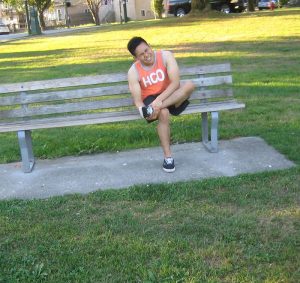A hammertoe happens due to muscular and ligament inequality around the toe joint which leads to the bending of the center joint of the toe and remains in this position. Hammertoe causes rubbing and irritation on top of the bent toe.
Women are more susceptible to hammertoes due to the shoes worn. The middle 3 toes are usually affected by the condition. It is a serious condition among people with diabetes or poor circulation since they have a high risk for developing infections and foot ulcers. Wearing orthopedic shoes can prevent these complications.
Types of hammertoes

- Flexible hammertoes – the joints can still be moved and less severe.
- Rigid hammertoes – the tendons in the toe become stiff and the joint becomes misaligned and the toes cannot be moved. This condition needs surgery.
Causes
- Tendency to develop hammertoes since the foot is slightly unstable such as flat foot. A high-arched foot can also develop hammertoes.
- Arthritis
- Injury to the toe such as wearing ill-fitting shoes, shoes that are too tight, too short or pointy that they push the toes out of balance. High-heeled and pointy shoes places severe pressure on the toes.
Symptoms
- Corns forms on top of the joint
- Pain at the top of the bent toe when wearing shoes
- Pain on the ball of the foot under the bent toe
- Swelling and reddening of the toe joint
- Difficulty moving the joint
Treatment
- Avoid wearing ill-fitting shoes to prevent further injury that can worsen the condition. Wear shoes with wide toe box and soft interior. Avoid wearing high-heeled shoes when suffering from hammertoes.
- Apply an ice pack on the affected area a few times every day to lessen the swelling. If an ice pack is not available, a bag of frozen vegetables such as peas can be used. Avoid applying the ice pack directly on the skin to prevent further damage.
- Use a hammertoe pad for the shoe to protect and provide support as well as lessen pain.
- Treat corns or calluses that form on top of the affected toe using a pumice stone. Take a warm bath or shower before using a pumice stone. After taking a shower, file the calluses or corn and apply an exfoliating lotion after.
Tips
- Check regularly the early warning signs of hammertoes such as calluses or corns that form on the toes. They can form either on the top or underneath the toe at the base.
- Check for feet problems especially if suffering from diabetes and poor circulation or if there is numbness of the toes.
- Massage the feet regularly. Another alternative is taking a warm foot bath.
